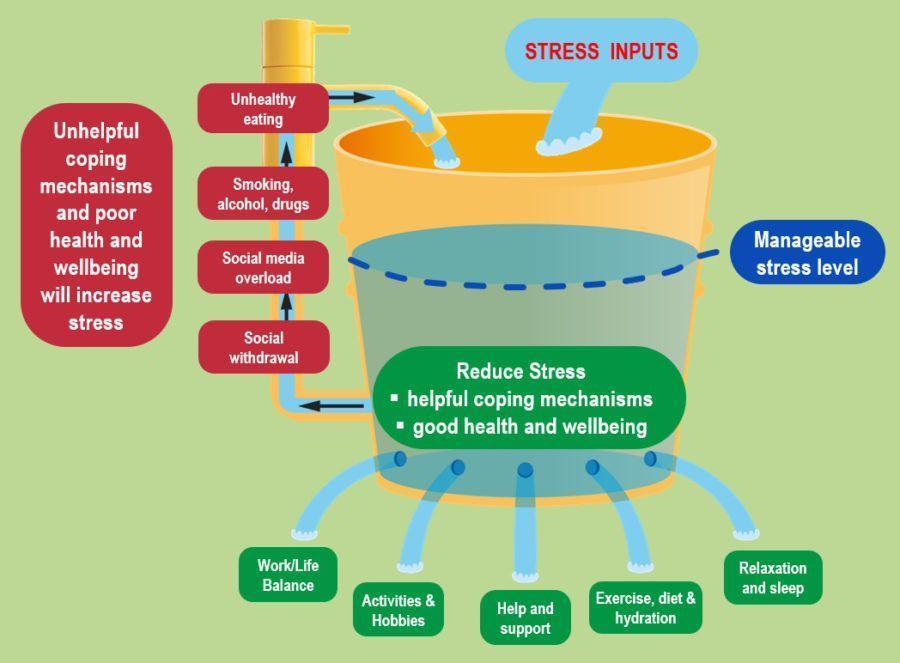National conversations have taken significant strides in foregrounding the impacts of employee wellbeing on business productivity, society, and the economy more broadly. Focusing on mental health aspects alone, a 2020 Deloitte study identified an annual cost to employers of up to £45 billion, with over half of this resulting from presenteeism – when employees are less productive at work due to poor mental health or injury.[1] The coronavirus pandemic has further complicated this situation, as the Mental Health Foundation’s ongoing landmark study has confirmed.[2]
Businesses are increasingly turning to mental and physical wellbeing specialists for assistance with formulating strategies that can protect the general wellbeing of their employees in a holistic manner. The sheer variety of options for addressing this core problem, however, has highlighted the importance of developing strategies for change in the right way.
A carefully planned strategy for tackling mental and physical wellbeing in the workplace has to start with commitment at the leadership and organisational levels. But this raises the question of how businesses can balance top-down methods of employee engagement with the need to drive positive cultural change from below.
In what follows, we discuss some of the ways Wellbeing Champions provide an innovative solution to this need. Wellbeing Champions are a team of volunteers within an organisation responsible for championing the cause of mental and physical wellbeing in the workplace, promoting awareness and support for colleagues, and driving positive cultural change. We will define the role of Wellbeing Champions before discussing the importance of tailoring them to your workplace; opening up communication channels between employees and senior management; and using champions to promote awareness about mental and physical wellbeing factors and coping mechanisms.
Whereas businesses frequently use Wellbeing Champions to promote awareness about mental health in the workplace, we believe the conversation has to go further than this. Focusing on mental health alone neglects the wide range of mental, physical and musculoskeletal factors that shape our general wellbeing at work.

Wellbeing champions are employees who focus on improving the wellbeing of their fellow colleagues, as part of the company wellbeing initiatives.
We define Wellbeing Champions as the eyes and ears of the workforce, meaning that they are encouraged to both monitor their peers and be receptive to others experiencing hardship. It is their responsibility to initiate conversations with colleagues, stimulate new ideas, and communicate these to management.
Wellbeing Champions are a team of ambassadors for mental and physical wellbeing who can assist with driving positive cultural change at the employee level. They encompass members of both staff and management to drive an organisation’s wider strategy for promoting a health-creating work environment. Wellbeing Champion teams provide a core support mechanism through which employees can exercise peer-based oversight, challenge stigmas, and assist with driving company strategy in supporting initiatives.
One of the core roles of Wellbeing Champions is to communicate to employees about mental and physical wellbeing, and to signpost those who are in need of further support. Champions are equipped with knowledge about how to engage people who are struggling with poor mental and physical health, as well as who to refer them to in seeking further support. Such further support mechanisms may include a company Employee Assistance Programme (EAP), or a member of staff who has been trained as a Mental Health First Aider (MHFA).
We provide customised, all-round Wellbeing Champion training to delegates within businesses, empowering them to support and drive the cause of mental and physical wellbeing in the workplace. Delegates are educated about key topics covering areas such as awareness raising, engaging peers through signposting, liaising with wider company support structures, and understanding the importance of coping mechanisms for combatting stress and poor mental and physical health.
Businesses have different needs depending on the nature of their work and organisational structures, among other factors. There is therefore no single blueprint for training Wellbeing Champion teams that can fit easily into any work environment. That said, the particular strength of Wellbeing Champions as a mechanism for driving positive cultural change lies in its adaptability to a wide range of employee scenarios. Whereas this adaptability provides businesses with the freedom to implement Wellbeing Champions in a variety of ways, it also highlights the need for professional guidance in tailoring the role to specific business needs.
In training delegates to champion mental and physical wellbeing, we adopt a customised approach attentive to individual requirements. We identify the role best suited to the particular business size and organisational structure under consideration. This means that in a smaller business, the role of Wellbeing Champions may overlap with other support roles, for example the Mental Health First Aider. In a larger business, on the other hand, these roles may be separated to accommodate greater differentiation between the various mental and physical wellbeing support mechanisms. The ideal strategy for Wellbeing Champions is one based on rigorous assessment of employee needs and the development of support mechanisms suited to your particular work environment.
Wellbeing Champions are an essential tool for promoting a health-creating work environment in which employees are made to feel empowered and motivated to drive positive cultural change from below. But they also facilitate important communication channels that allow for the transfer of ideas for new initiatives between employees and management.
The Wellbeing Champion communication process facilitates the transfer of ideas among the workforce, providing employees with the opportunity to participate in the creation of new initiatives within the business. This process plays a key role in making employees feel included and empowered within the decision-making process around issues related to mental and physical wellbeing.
Wellbeing Champions will invariably generate new ideas for initiatives based on their personal experiences in dealing with their colleagues. These can be channelled to other parts of the business through a defined communication process. One example of how this can be done is through the use of Wellbeing Groups and Wellbeing Group Leads, who are responsible for evaluating employee ideas and making relevant recommendations to management. As an example, Wellbeing Champions can forward their ideas to the Group Leads (usually members of senior management) for consideration. If the Group Leads decide that the idea is viable, they will present it to the entire Wellbeing Group as a potential new initiative. The Wellbeing Group will decide whether it is necessary to assign a project team who can further investigate the viability of the idea and develop a proposal for approval and funding.
The ideas that Wellbeing Champions generate will not always be viable at any given moment, and sometimes ideas may be parked for later. When these ideas receive sufficient backing, however, Wellbeing Champions are central to the implementation process, ensuring that new initiatives are promoted across the workforce.
Wellbeing Champions facilitate communication between staff and management. They constitute both an important springboard for generating new ideas, and a mechanism for the implementation of initiatives among employees. This organic flow ensures that Wellbeing Champions are involved at all stages of the communication process, leaving champions feeling empowered and confident to drive positive cultural change in the workplace.
The various factors that affect our mental and physical wellbeing on a daily basis are potentially infinite. They could include things like the stress we feel about an upcoming work project, personal relationship problems, money worries, or an injury resulting from long hours sitting at your desk. It is nevertheless convenient to break this abundance of factors down into four broad conceptual areas, namely workplace factors, emotional and physical health factors, habits and life skills factors, and social and life circumstances factors. While we can distinguish between these areas for convenience, it is important to remember that in reality there is always going to be overlap between them.
Wellbeing Champions develop an awareness of mental and physical wellbeing factors and how these impact us on a daily basis. By being aware of the different factors that contribute to poor mental and physical health, champions are well placed to think about the different coping mechanisms employees can use to improve their work lives.

Presenteeism is one of the biggest threats to UK productivity and a key issue for organisations that want to prioritise employee wellbeing.
The goal of providing training about mental and physical wellbeing factors is to allow Wellbeing Champions to become forward-looking in taking positive steps to prevent the onset of poor mental and physical health. This pro-active stance is important to fostering an environment in which employees feel empowered to share new ideas within the business.
Tackling mental and physical wellbeing factors in the workplace is of monumental importance. Studies have shown that the problem of presenteeism – the practice of coming to work despite illness or injury, resulting in low productivity – far outweighs the problem of absenteeism, costing employers between £26.6 billion and £29.3 billion ever year.[3]
The occurrence of presenteeism is furthermore on the rise. A 2018 survey conducted by CIPD and Simply Health found that 86% of over 1,000 respondents reported having observed presenteeism in their organisations within the space of a year.[4] Presenteeism is particularly prevalent in businesses where a culture of long working hours is the norm. This highlights the importance of driving positive cultural change through awareness about mental and physical wellbeing factors.
With awareness and understanding comes the will to drive positive cultural change. Wellbeing Champions are trained not only to be aware of the different mental and physical wellbeing factors that affect us, but also of the different coping mechanisms we can use to counter them.
In developing an appreciation of coping mechanisms, it is useful to think about the relationship between stress, mental health and physical health. While we are used to thinking about stress and mental health as one and the same thing, the two are in fact different. Stress impacts our mental health in a variety of ways, sometimes positively and at other times negatively. Likewise, our physical health can often escalate stress and impact our mental wellbeing. It is important to remember that stress is not an inherently negative concept. Healthy stress levels are in fact essential to overall productivity. That said, the implications of negative stress for productivity mean that it is important for employees to develop effective coping mechanisms to protect their mental and physical wellbeing.
The relationship between stress and coping mechanisms is illustrated by the metaphor of the stress bucket. Imagine you are carrying a bucket that gradually fills up as you develop different forms of stress. You can manage the weight of the bucket up to a certain extent, but after this the bucket starts to weigh you down, affecting your physical and mental health. Due to the weight of the bucket, it becomes important for you to find coping mechanisms that can help with lightening the load and improving your wellbeing. Effective coping mechanisms metaphorically puncture holes at the bottom of the bucket, allowing the stress to spill out.
Wellbeing Champions are trained to be aware of the different coping mechanisms we can use to decrease our stress levels and enhance our general wellbeing. The possible forms that these coping mechanisms can take are endless, and will always need to be tailored to the specific needs of the individual in question. But it is important to develop a sound awareness of coping mechanisms so as to differentiate effective methods from counterproductive ones. Whereas effective coping mechanisms puncture holes at the bottom of the bucket and ultimately decrease our stress, counterproductive coping mechanisms have the adverse effect, offering us the illusion of stress relief when in fact they contribute to stress input. Some examples of counterproductive coping mechanisms include drinking, smoking, recreational drug use and unhealthy eating.

We’ve all got our own personal stress bucket which varies in size, depending on how resilient you are and how good you are at coping with stress.
Stresses flow into the bucket on a daily basis – what’s important is not letting the bucket overflow. This can be achieved through positive coping mechanisms.
Wellbeing Champions are trained to be aware of how coping mechanisms can decrease our stress and improve general wellbeing in the workplace. From promoting healthy nutrition habits to emphasising the importance of exercise in our daily lives, Wellbeing Champions are encouraged to share knowledge with their peers and contribute to a positive work culture. As the focus on productivity creates more stressful working conditions for employees, finding coping mechanisms to deal with stress will play an increasingly important role in driving positive cultural change in businesses. Wellbeing Champions are an essential tool in this process.
Wellbeing Champions provide an innovative solution to the problem of balancing leadership commitment with the need to drive positive cultural change from below. As a core support mechanism, Wellbeing Champions assist their colleagues by being the eyes and ears of the workforce; facilitate communication between staff and management; promote awareness about mental and physical wellbeing factors; and encourage the use of healthy coping mechanisms to decrease our stress. Their insider position within the business makes them the ideal tool for widening employee perspectives and promoting a positive work culture.
References
[1] Mental Health and Employers: Refreshing the Case for Investment, 2020 study commissioned from Deloitte, available at: www2.deloitte.com/uk/en/pages/consulting/articles/mental-health-and-employers-refreshing-the-case-for-investment.html.
[2] Coronavirus: Mental Health in the Pandemic, a repeated, cross-sectional study of how the pandemic is affecting people’s mental health. For a recent summary of the findings, visit: www.mentalhealth.org.uk/news/pandemic-one-year-landmark-mental-health-study-reveals-mixed-picture.
[3] See above, Mental Health and Employers (Deloitte).
[4] Health and Wellbeing at Work, a 2018 survey conducted by CIPD and Simply Health. For more information, visit: www.cipd.co.uk/knowledge/culture/well-being/health-well-being-work.











The stress bucket model is interesting. Thanks for sharing!